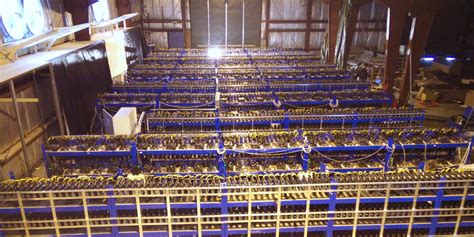Mining Ethereum with a Single Graphics Processing Unit (GPU): A Step-by-Step Guide
Are you ready to join the cryptocurrency mining world with your GTX Ttan and want to explore the possibility of mining Ethereum exclusively with the powerful GTX 1060? You’ve come to the right place. In this article, we’ll walk you through the process of setting up a mining rig using a single graphics processing unit (GPU) and SGMiner version v5.3.1.
Why mine on a GPU?
Mining Ethereum requires significant processing power, which is typically provided by multiple GPUs. However, if your budget allows, investing in a high-end GPU can significantly reduce the cost of mining. The GTX 1060 is a powerful GPU that offers excellent performance for mining Ethereum, and with SGMiner v5.3.1, you’ll be able to take full advantage of its capabilities.
Hardware Requirements:
Before we dive into the setup, make sure your hardware meets the minimum requirements for Ethereum mining:
- CPU: Intel Core i3 or AMD equivalent
- RAM: 8GB DDR4
- OS: Windows 10 (32-bit)
- GPU: GTX Ttan (minimum 2GB VRAM) or GTX 1060
Setting up your mining rig:
- Upgrade your computer: If you don’t have a GTX Ttan yet, upgrade to one of the required GPUs.
- Install SGMiner v5.3.1: Download and install SGMiner from the official website.
- Configure SGMiner:
- Open SGMiner and click “Edit” (gear icon).
- Set “Pool Address” to your Ethereum mining pool address or create a new one.
- Set “Hashrate” to 1 (you can adjust this value depending on your desired hash rate, but 1 is a good starting point).
- Configure your mining settings
:
- Set “Bit Depth” to 12 bit or 14 bit (depending on your GPU’s VRAM capacity).
- Set “Memory” to the maximum amount of VRAM available on your GPU.
- Set “Power Limit” to a reasonable value, as excessive power consumption can cause heat issues and reduced performance.
Mining Ethereum with SGMiner v5.3.1:
Now that you have your mining rig set up, it’s time to start mining! Here are some tips to help you get started:
- Start small: Start with a small amount of cryptocurrency (for example, 100 ETH) and increase as your hardware improves.
- Monitor your wallet: Keep an eye on your Ethereum balance and make sure the mining pool is getting paid correctly.
- Adjust your hash rate

: As you gain more experience, try adjusting your hash rate to optimize performance.
Challenges and considerations:
Mining on a GPU can be challenging due to:
- Limited VRAM: If your GPU doesn’t have enough VRAM, it may have trouble allocating enough memory for the mining process.
- Increased power consumption: Excessive power consumption can cause heat issues and reduced performance.
To overcome these challenges, consider the following tips:
- Upgrade to a GTX Tfan with 6GB or more VRAM (if possible).
- Use a high-performance power supply (PSU) that supports multiple GPUs.
- Regularly monitor your computer’s temperature using software such as HWiNFO or GPU-Z.
Conclusion:
Mining Ethereum on a GPU is a viable option, and with SGMiner v5.3.1 you can set up an efficient mining rig for the GTX 1060. However, it is essential to be aware of the challenges and considerations involved in this setup. By following these steps and tips, you will be well on your way to joining the Ethereum cryptocurrency mining community.
Remember, mining is not without risks, including power consumption, heat issues, and potential losses due to fluctuations in electricity prices. Always keep an eye on your wallet and monitor your computer’s performance to ensure a smooth mining experience.
Happy mining!
